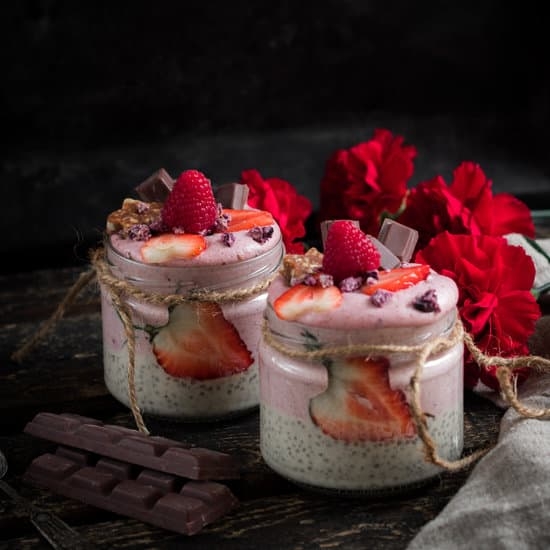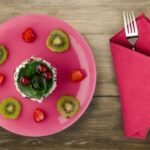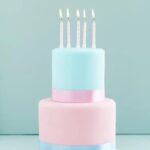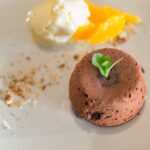When it comes to creating a visually stunning and delicious cake, one of the key elements is the decoration. Knowing what to decorate cake with can elevate a simple cake into a work of art that not only looks amazing but also tastes divine. From luscious frostings to intricate piping techniques, the possibilities for decorating cakes are endless.
Cake decoration plays a crucial role in making any celebration or occasion memorable. Whether it’s a birthday, wedding, anniversary, or just a casual gathering, a beautifully decorated cake can be the centerpiece that wows your guests. The right decorations not only enhance the overall look of the cake but also contribute to its flavor and texture.
In this article, we will delve into various aspects of cake decoration, from different types of frostings like buttercream and fondant to edible decorations such as fresh fruits and chocolate shavings. We will also explore non-edible decorations like ribbons and edible glitter, as well as piping techniques that allow you to unleash your creativity on your cakes.
So if you’re ready to take your cake decorating skills to the next level, read on for expert tips, tricks, and DIY ideas that will inspire you to create show-stopping desserts.
Types of Frosting
Frosting is an essential element in cake decoration, as it not only adds flavor but also serves as a base for various decorations. There are several types of frosting options to choose from, each offering a unique texture and taste. Here are some popular types of frostings that you can use to decorate your cakes:
- Buttercream: Buttercream frosting is a classic choice for many bakers due to its creamy and smooth consistency. It is made with butter, powdered sugar, and flavorings, allowing for endless flavor possibilities.
- Fondant: Fondant is a versatile frosting that can be rolled out into sheets and draped over cakes for a flawless finish. It provides a sleek and polished look, making it ideal for special occasions like weddings or birthdays.
- Ganache: Ganache is a rich mixture of chocolate and cream that creates a glossy and decadent finish when spread over cakes. It can be poured over cakes for a smooth glaze or whipped into a fluffy frosting.
- Royal Icing: Royal icing is commonly used for intricate designs and decorations on cakes. Made with egg whites and powdered sugar, royal icing dries hard, making it ideal for piping delicate details.
When deciding what to decorate cake with, it’s important to consider the type of frosting that best suits your desired design and taste preferences. Experimenting with different frostings can help you discover new techniques and styles to elevate your cake decorating skills. Whether you prefer the simplicity of buttercream or the elegance of fondant, choosing the right frosting plays a crucial role in creating visually stunning cakes.
Edible Decorations
Decorating a cake is not just about making it visually appealing, but also adding extra layers of flavor and texture. One of the most popular ways to enhance the look and taste of your cake is by using edible decorations. Fresh fruits such as berries, kiwi slices, or citrus zest can add a burst of color and freshness to your cake.
Nuts like almonds, pistachios, or pecans can provide a crunchy texture and nutty flavor profile that complements the sweetness of the cake. Edible flowers are not only beautiful but also lend a delicate floral aroma to your dessert. Lastly, chocolate shavings or curls are a classic choice that never fails to impress with their rich chocolatey taste.
When deciding what to decorate the cake with, it’s essential to consider not only the aesthetics but also how each element will contribute to the overall taste experience. For instance, pairing citrus fruits with a lemon cake can create a zesty contrast, while choosing nuts like hazelnuts for a chocolate cake can add depth and richness. Edible decorations should be chosen carefully to complement the flavors of the cake itself and elevate it to a new level of deliciousness.
In addition to fruits, nuts, flowers, and chocolate shavings, there are endless possibilities for edible decorations that you can use on your cakes. From caramel drizzles to macarons, from meringue kisses to candied ginger – experimenting with different ingredients can lead to innovative and mouthwatering creations.
The key is to have fun and let your creativity guide you in choosing what to decorate your cake with. Remember that edible decorations not only add visual interest but also contribute unique flavors and textures that make every bite memorable.
| Edible Decorations | Examples |
|---|---|
| Fresh Fruits | Berries, Kiwi Slices |
| Nuts | Almonds, Pistachios |
| Edible Flowers | Roses, Lavender |
| Chocolate Shavings | Milk Chocolate Curls, White Chocolate Shards |
Non-Edible Decorations
Another fun way to add sparkle and shine to your cakes is by using edible glitter. Available in various colors and forms such as dust, flakes, or sparkles, edible glitter can bring a touch of magic to your creations. It is important to note that not all glitters are edible, so make sure to use products that are specifically labeled as edible for food safety reasons.
Furthermore, sprinkles are a versatile and easy way to decorate cakes. From colorful sugar pearls to metallic dragees, sprinkles come in a wide range of shapes and sizes, making them perfect for adding texture and visual interest to your designs.
To ensure that your non-edible decorations stay securely in place on your cake, consider using food-safe adhesives such as piping gel or royal icing. These substances can act as glue to attach ribbons, cake toppers, and other decorations without affecting the taste or texture of the cake. Experimenting with different combinations of non-edible decorations can help you discover unique ways to express your creativity and enhance the overall aesthetic appeal of your cakes.
| Non-Edible Decoration | Description |
|---|---|
| Ribbons | Adds elegance and charm; available in various colors |
| Cake Toppers | Serve as focal points on top of cakes; offer personalization options |
| Edible Glitter | Brings sparkle and shine; available in different colors and forms |
| Sprinkles | Add texture and visual interest; come in various shapes and sizes |
Piping Techniques
Buttercream Flowers
One popular piping technique is creating buttercream flowers, which adds a beautiful and elegant touch to any cake. With the right piping tip and steady hand, you can pipe realistic-looking flowers such as roses, peonies, daisies, and more. By varying the pressure on the piping bag and the angle of your hand, you can create dimension and texture to make your flowers come to life on the cake.
Ruffle Designs
Ruffle designs are another trendy piping technique that can add a whimsical and romantic feel to your cakes. Using a petal or leaf-shaped piping tip, you can create cascading ruffles on the side of the cake or create a layered effect on top. By gently squeezing the piping bag while moving it in a back-and-forth motion, you can achieve delicate and sophisticated ruffles that will impress your guests.
Textured Patterns
For those looking to add depth and visual interest to their cakes, textured patterns created with piping techniques are a great choice. You can use different tips like grass tips or star tips to pipe geometric shapes, swirls, lines, or even abstract designs onto your cake. Experimenting with different techniques and combinations of piping tips can help you discover unique patterns that suit your style and theme for any occasion.
Tools and Equipment
When it comes to decorating cakes, having the right tools and equipment is essential to achieve professional-looking results. Whether you are a beginner or a seasoned baker, having the necessary items on hand can make the decorating process much smoother and enjoyable. Let’s explore some of the essential tools and equipment needed for cake decoration.
Piping Bags and Tips
Piping bags and tips are crucial tools for creating intricate designs and patterns on cakes. These come in various sizes and shapes, allowing for different decorating techniques such as borders, flowers, writing, and more. It is important to have a variety of piping tips including round tips, star tips, leaf tips, and petal tips to create diverse decorations on your cakes.
Spatulas
Spatulas are another indispensable tool for cake decorating. Offset spatulas are perfect for spreading frosting smoothly on the surface of the cake while maintaining clean edges. Angled spatulas are ideal for smoothing out frosting on the sides of the cake for a seamless finish. Having different sizes of spatulas can provide versatility in decorating different sized cakes.
Turntables
A turntable is a rotating platform that allows you to easily spin your cake while decorating. This enables you to have better control over piping designs or smoothing out frosting on all sides of the cake without having to constantly move your hands around. Turntables come in various sizes and materials, with some options being motorized for added convenience.
Having these essential tools and equipment such as piping bags, tips, spatulas, and turntables in your cake decorating arsenal can significantly enhance your decorating skills and enable you to create stunning designs on your cakes. With the right tools at your disposal, you can unleash your creativity and explore endless possibilities in cake decoration.
Experimenting with different techniques and decorations will not only elevate the look of your cakes but also add a delicious touch that will impress everyone who takes a bite.
Tips and Tricks
Cake decoration can seem like a daunting task for beginners, but with the right tips and tricks, anyone can achieve professional-looking results. Here are some expert recommendations to help you take your cake decorating skills to the next level:
- Start with a smooth base: Before decorating your cake, make sure the surface is smooth and even. Crumb coat the cake with a thin layer of frosting to seal in any crumbs and create a clean canvas for decoration.
- Use the right tools: Invest in high-quality tools such as piping bags, tips, offset spatulas, and turntables to make the decorating process easier and more precise.
- Practice consistency: When working with frosting, make sure it is at the right consistency for the technique you are using. Too runny or too stiff frosting can make decorating difficult.
Additionally, attention to detail is crucial when it comes to achieving professional-looking cake decorations. Here are a few more tips to keep in mind:
- Color coordination: Choose colors that complement each other and match the theme of the cake. Use food coloring sparingly to achieve vibrant shades without altering the taste of the frosting.
- Experiment with textures: Mix and match different textures such as smooth fondant, crunchy nuts, and creamy ganache to add visual interest to your cakes.
- Practice piping techniques: Practice different piping techniques like rosettes, shells, and ruffles to add depth and dimension to your designs. Don’t be afraid to experiment and try new patterns.
With these expert tips and tricks in mind, beginners can confidently decorate cakes like pros. Remember that practice makes perfect, so don’t be discouraged if your first attempts don’t turn out exactly as planned. Keep experimenting with different decorations and techniques until you find what works best for you.
DIY Decorations
When it comes to decorating cakes, creativity knows no bounds. DIY decorations provide a fantastic opportunity to add a personal touch to your baked creations using simple everyday items like cookie cutters, stencils, and food coloring. These budget-friendly options allow you to showcase your artistic skills and create unique designs that will impress your friends and family.
Cookie cutters are not just for making cookies; they can also be used to create fun and intricate designs on cakes. Whether you want to make shapes out of fondant or use them as stencils for powdered sugar decorations, cookie cutters offer endless possibilities. Consider investing in a variety of sizes and shapes to cater to different themes and occasions.
Stencils add a professional look to your cakes with minimal effort. You can use them with powdered sugar, cocoa powder, or even airbrush colors to create beautiful patterns and designs. From elegant swirls to whimsical motifs, stencils are versatile tools that can elevate the aesthetic appeal of your cake effortlessly. Experiment with different stencil designs to find the perfect match for your cake decoration needs.
Conclusion
In conclusion, decorating cakes is an art form that not only enhances the visual appeal of a cake but also contributes to its overall taste and presentation. From choosing the right type of frosting to selecting the perfect edible decorations, there are countless ways to elevate a simple dessert into a stunning masterpiece.
Whether you opt for buttercream for a classic finish or experiment with fondant for more intricate designs, the possibilities are endless when it comes to what to decorate cake with.
In addition to edible decorations like fresh fruits and chocolate shavings, non-edible items such as ribbons and cake toppers can add an extra flair to your creation. Piping techniques offer another avenue for creativity, allowing you to personalize your cakes with unique designs and patterns. By investing in essential tools like piping bags and turntables, you can enhance your decorating skills and achieve professional-looking results at home.
As you embark on your cake decorating journey, remember that practice makes perfect. Don’t be afraid to experiment with different techniques and DIY decoration ideas using everyday items like cookie cutters and food coloring. The key is to have fun in the process and let your creativity run wild. So go ahead, unleash your imagination, and create show-stopping cakes that will impress both your taste buds and your guests.
Frequently Asked Questions
What Should You Use to Decorate a Cake?
When it comes to decorating a cake, you have a variety of options to choose from. Some popular choices include buttercream frosting, fondant, royal icing, chocolate ganache, fresh fruit, edible flowers, sprinkles, and piping designs. Each option offers a unique way to enhance the appearance of your cake and cater to different tastes and preferences.
What Can I Top a Cake With Besides Frosting?
If you’re looking for alternatives to traditional frosting as a cake topping, there are several creative options available. Consider using whipped cream, cream cheese frosting, ganache glaze, caramel sauce, fruit compote, flavored syrups, chopped nuts or seeds, shredded coconut, chocolate curls or shavings, or even a dusting of powdered sugar.
These toppings can add flavor and visual interest to your cake without relying on traditional frosting.
What Are the 5 Kinds of Cake Decorating?
Cake decorating encompasses a wide range of techniques and styles that cater to various skill levels and preferences. The five main types of cake decorating include buttercream piping (creating designs with buttercream frosting), fondant work (using rolled icing for intricate designs), royal icing details (piping delicate patterns with royal icing), edible image printing (decorating cakes with custom printed images), and sculpted decorations (creating 3D shapes or sculptures out of fondant or modeling chocolate).
Each style offers unique opportunities for creativity and personalization in cake decorating projects.

Welcome to our cake decorating blog! My name is Destiny Flores, and I am the proud owner of a cake decorating business named Cake Karma. Our mission is to provide delicious, beautiful cakes for all occasions. We specialize in creating custom cakes that are tailored specifically to each customer’s individual needs and tastes.





